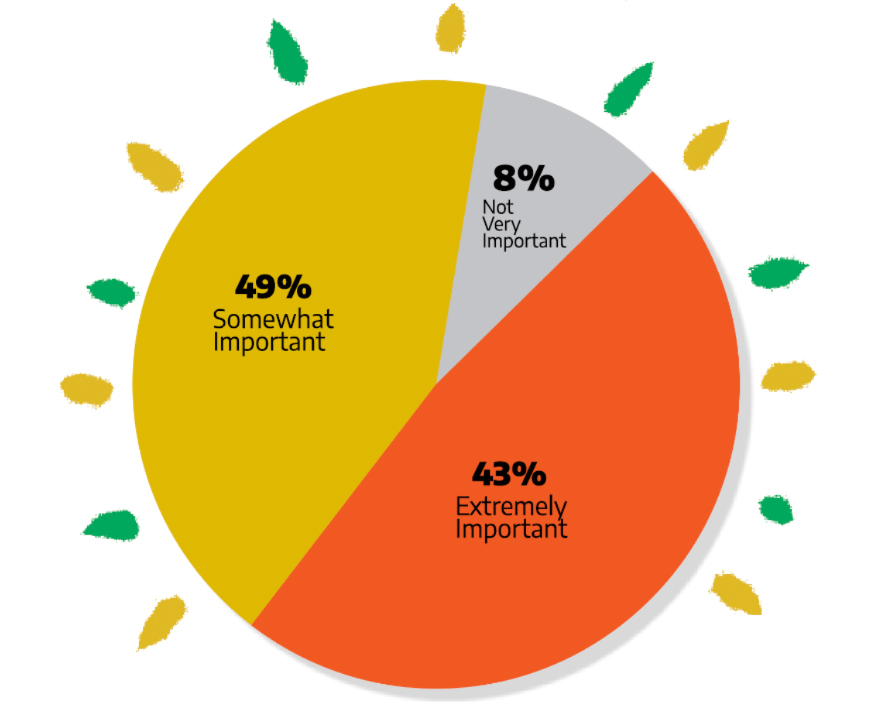
Laughing Matters
15 ways humor contributes directly to sales, management and general business success.
Published
2 years agoon
NO JOKE: MOST SIGN companies could do with a bit more humor. Not only does it lighten the mood, it can help boost morale, performance and even the bottom line. Stop us if you’ve heard this one, but the list of benefits from fostering an environment of levity in the workplace is staggering.
Humor enhances sales and productivity, makes advertising memorable and leaders appear more competent and likable. It transforms mundane training into something engaging, increases employee retention and attracts eager new hires. It flattens hierarchies, facilitates collaboration, heightens bonding and encourages people to take positive risks. It lowers stress, builds resilience, reduces hostility, deflects criticism, improves morale and helps management communicate difficult messages. It essentially costs nothing. Perhaps best of all, it just makes coming into the shop or office more enjoyable for everyone.

So, what’s the punchline? A rather depressing one: Some bosses and workers, especially those in more white-collar settings, think humor is a bad idea … at least in their particular circumstances at their particular places of work. And that mindset is pervasive. According to some studies, we spend about a third as much time laughing as people did in the 1930’s — during The Great Depression!
How important is humor in selling signs/running a successful sign business?

Here’s how the Signs of the Times Brain Squad responded to our question on the importance of humor to what they do. More of their responses follow.
What could explain this? There are three main reasons, all of which you’re probably quite familiar with: Humor is viewed as inappropriate for the serious discourse of business; it’s hard to do well; and when poorly executed, it’s dangerous. Jokes depend on a shared view of the world, an understanding of the same cultural and linguistic touchpoints and, crucially, a willingness to violate the same norms and laugh at the same things. When they bomb, it’s ostracizing. Plus if the quip or story is viewed as offensive, it can damage the teller’s professional standing by making them appear lacking in both competence and intelligence — or it can even be legally actionable.
In the following pages, we provide tips from your fellow sign company owners and managers, comedians, academics and our own reading to help you up your humor game, and your business operations as well.

BREAK THE ICE
 In your own sign business, think of the first-time client who has no concept of their signage needs or budget, much less a vector file. They’re likely feeling out of their depth and intimidated by industry jargon. A cold, all-business point of contact is not always best to welcome questions that put a customer’s mind at ease in the moment.
In your own sign business, think of the first-time client who has no concept of their signage needs or budget, much less a vector file. They’re likely feeling out of their depth and intimidated by industry jargon. A cold, all-business point of contact is not always best to welcome questions that put a customer’s mind at ease in the moment.
Despite the weight of the occasion, this is often the perfect opportunity for a little irreverence. “We try to get a laugh out of every single customer that comes into the shop,” says Chad Lawson, Sign Pro of Skagit Valley, Mount Vernon, WA. “Humor tends to make the customers feel comfortable with our process and gives them confidence that we are going to take care of them.”
Disarmed, a customer is more likely to listen and in the mood to buy. Done right, humor has the power to build bridges instantly, lull the customer into surrendering useful personal information and help overcome objections. “Most customers are already excited, they have mentally committed to spending their money, but they are very nervous about overspending,” says Jasper Burton from Cuerden Sign Co. in Conway, AR. “Humor helps build trust, and confidence.”
NOT A NATURAL?
 But I’m not all that funny, you say. Mercifully, it’s not that hard to get better. Humor is a skill, which means it can be learned. “You don’t need to be Amy Schumer, Ali Wong or John Mulaney to use humor well in the workplace,” writes Brad Bitterly and Alison Wood Brooks in Sarcasm, Self-Deprecation, and Inside Jokes: A User’s Guide to Humor at Work.
But I’m not all that funny, you say. Mercifully, it’s not that hard to get better. Humor is a skill, which means it can be learned. “You don’t need to be Amy Schumer, Ali Wong or John Mulaney to use humor well in the workplace,” writes Brad Bitterly and Alison Wood Brooks in Sarcasm, Self-Deprecation, and Inside Jokes: A User’s Guide to Humor at Work.
Studies even show that something as simple as adding a lighthearted line at the end of a sales pitch can increase customers’ willingness to pay nearly 20% more. “The funny thing about humor is that we don’t need to tell a joke to get a laugh. It can be enough simply not to take yourself too seriously,” notes business communication expert Carmine Gallo in The Storyteller’s Secret.
Naomi Bagdonas, co-author of Humor, Seriously: Why Humor Is a Secret Weapon in Business and Life concurs: “This is not about becoming a comedian; it’s about looking at the world in a different way. And the good news is that our lives are already full of humor if we only notice. When we live our lives on the precipice of a smile, we shift how we interact with the world.”

HAVE YOU EVER NOTICED…?
 To find (more) humor in your life, don’t look for what’s funny; just look for what’s true, says Bagdonas. “Become an observer of your life. Look for little oddities or incongruities. It’s not about being funny per se but using humor in small intentional ways.” Comedian Jerry Seinfeld made his career largely from this sort of observational humor: “What’s the deal with lampshades? I mean if it’s a lamp, why do you want shade?” His genius is in seeing the funny in the thing right in front of your nose.
To find (more) humor in your life, don’t look for what’s funny; just look for what’s true, says Bagdonas. “Become an observer of your life. Look for little oddities or incongruities. It’s not about being funny per se but using humor in small intentional ways.” Comedian Jerry Seinfeld made his career largely from this sort of observational humor: “What’s the deal with lampshades? I mean if it’s a lamp, why do you want shade?” His genius is in seeing the funny in the thing right in front of your nose.
“Humor brings people together; especially when it comes on the tail of a negative experience that a group of people have suffered through,” says Jake Zani, Rule Signs & Graphics, Randolph, VT. “Having to crawl under your car at the height of mud season to wire your muffler to the frame … sucks, but it sucks a lot less when there is someone in the mud next to you that you can crack a joke with.”

STORY TIME
 The safest humor involves personal stories because they are guaranteed to be original. And they can be practiced and perfected in your own highly personalized style. Keep in mind there’s nothing funny about a confident person who’s doing well. The best stories involve those when life threw you a banana peel. Your new trainee printing the menu file (which still includes the placeholder text “SAMICH” all over it) for the client is not funny today … but it will be when you get to Vegas and swap stories with other sign company owners.
The safest humor involves personal stories because they are guaranteed to be original. And they can be practiced and perfected in your own highly personalized style. Keep in mind there’s nothing funny about a confident person who’s doing well. The best stories involve those when life threw you a banana peel. Your new trainee printing the menu file (which still includes the placeholder text “SAMICH” all over it) for the client is not funny today … but it will be when you get to Vegas and swap stories with other sign company owners.
“We have had many instances over the course of our signshop’s life that fall into the category of ‘You can’t make this sh*t up,’” says Mallory Lynn, Signarama Brighton, Brighton, CO. “From some of the interview stories to working with some crazy vendors to an employee that hand-cut a wrap on the vehicle, the stories never end.”
AdvertisementSHORT STORIES
 Comedy lives in the details but you don’t want to overdo them, says San Francisco comic Reggie Steele: “Just enough to set the scene.” Shakespeare may have written, “Brevity is the soul of wit,” but funny folks have known forever you need to get to the funny fast.
Comedy lives in the details but you don’t want to overdo them, says San Francisco comic Reggie Steele: “Just enough to set the scene.” Shakespeare may have written, “Brevity is the soul of wit,” but funny folks have known forever you need to get to the funny fast.
“Read the room,” says Kurt Stoner, Stoner Graphix Inc., Hummelstown, PA. “Use [humor] as needed, or if the opportunity arises … it may be appropriate.”
QUESTION:
The kind of humor exhibited by sign professionals has a reputation in some circles for being, let’s say, unique. What’s your view of sign-pro humor?
| Yep, unique is the word, none other like it |
|
55%
|
| Lame is probably more accurate |
|
1%
|
| Probably not much different from that of the general population |
|
37%
|
| Way better than the general population — another level |
|
7%
|
| There’s no room for humor in the sign industry |
|
0%
|

START SMALL
 As you embark on your journey to find and share the funny, take tiny steps — your brain works better and you make better choices when you’re in your comfort zone. You’re also likely to approach customers more positively when it’s in a situation where you’ve had success before, writes Marcus Buckingham in The One Thing You Should Know.
As you embark on your journey to find and share the funny, take tiny steps — your brain works better and you make better choices when you’re in your comfort zone. You’re also likely to approach customers more positively when it’s in a situation where you’ve had success before, writes Marcus Buckingham in The One Thing You Should Know.
“I think there is a fine line between humor grabbing attention and humor degrading your professionalism,” says Carl Heinlein, Cincinnati Custom Signs, Cincinnati. “Do people that enjoy the humor really think more highly of you or do they laugh and do business with a more ‘mature’ or serious business?” Finding balance and the right audience are key.
TRY IMPROV
 Humor workshops for business people, and especially improv clubs, have exploded in recent years, and while yes, improv is more than just looking silly and exposed in front of strangers, the benefits include getting more comfortable with public speaking. (One MIT study found a group of improv comedians generated 20% more ideas than professional product designers did — apparently practicing improv develops your ability to create). On top of a tougher skin, improv teaches specific techniques to think faster and funnier on your feet, the best known of which is the “and, yes” extension to allow you to further riff on an idea. It even makes for a great team-building exercise…
Humor workshops for business people, and especially improv clubs, have exploded in recent years, and while yes, improv is more than just looking silly and exposed in front of strangers, the benefits include getting more comfortable with public speaking. (One MIT study found a group of improv comedians generated 20% more ideas than professional product designers did — apparently practicing improv develops your ability to create). On top of a tougher skin, improv teaches specific techniques to think faster and funnier on your feet, the best known of which is the “and, yes” extension to allow you to further riff on an idea. It even makes for a great team-building exercise…
“I belong to two networking groups. From the beginning, it was difficult to stand and speak to a large group of people. But I discovered that humor relieved some of the anxiety of public speaking,” says Jeffrey Cross from Cross Signs, Seminole, FL.
THE “MEET-CUTE”
 Not all humor needs to be of the high-stakes interpersonal type. It can be inserted in the small existing rituals of a business. Bagdonas explains: “Oftentimes a manager can think, oh gosh, well, I have to do something totally big and bold to have some levity here. And actually, sometimes the more effective way is to say, what are the rituals you already have? Are there team communication channels? Are there all-hands or daily-standup meetings? And could you add a little bit of humor into those?” This can include anything from using lighthearted sign-offs in emails to getting staff to play “two truths and a lie” at monthly meetings.
Not all humor needs to be of the high-stakes interpersonal type. It can be inserted in the small existing rituals of a business. Bagdonas explains: “Oftentimes a manager can think, oh gosh, well, I have to do something totally big and bold to have some levity here. And actually, sometimes the more effective way is to say, what are the rituals you already have? Are there team communication channels? Are there all-hands or daily-standup meetings? And could you add a little bit of humor into those?” This can include anything from using lighthearted sign-offs in emails to getting staff to play “two truths and a lie” at monthly meetings.
Christopher Meinsen, Perspective1, Tampa, FL also recommends sneaking lighthearted humor into everyday encounters. “From a job interview with a new candidate to a collection call with a national partner that won’t pay, I use humor to break the tension after I make a direct statement,” he says. “And I always end an awkward conversation with something light and funny.”
CONTEXTUAL AWARENESS
 Any rules of thumb for using humor include this caveat: Conversational dynamics can vary profoundly from person to person and situation to situation. These factors are tricky to navigate and make it difficult to know whether your humor attempt is helpful or distracting. (And when you’re the boss, staff will often laugh politely even if something isn’t funny or is in poor taste, creating an unreliable feedback loop.) A joke can work even in a somber situation if it relieves tension. But a boss who jokes after a round of layoffs that he’s going to have to get a smaller yacht is likely to come across as insensitive and tone deaf, says Andrew Tarvin, a New York-based workplace coach and founder/author of Humor That Works.
Any rules of thumb for using humor include this caveat: Conversational dynamics can vary profoundly from person to person and situation to situation. These factors are tricky to navigate and make it difficult to know whether your humor attempt is helpful or distracting. (And when you’re the boss, staff will often laugh politely even if something isn’t funny or is in poor taste, creating an unreliable feedback loop.) A joke can work even in a somber situation if it relieves tension. But a boss who jokes after a round of layoffs that he’s going to have to get a smaller yacht is likely to come across as insensitive and tone deaf, says Andrew Tarvin, a New York-based workplace coach and founder/author of Humor That Works.
“Before you try to say something humorous, try to determine the type of person you’re addressing — the wrong humor will sink you as fast as the right humor will boost your chances of a sale,” says Tarvin. Mark Pietras-Weed, Webb Signs Inc., Fairfax, VA shares a similar sentiment: “Funny is one thing, rude is another. Know the difference.”

To determine your category, you can take a test at quiz.humorseriously.com.
BOUNCE BACK
 The first rule when a joke bombs is don’t double down. Don’t repeat the joke, thinking people must not have heard it. They most likely did. And don’t explain it. Instead, skilled humorists quickly turn the joke on themselves, says Michael Kerr, a workplace trainer and author of The Humor Advantage, adding that you should make sure to deliver it in a warm, non-sarcastic tone. For example: “It takes a special human being to do what I just did,” or, “This is great. Today was going too well anyway,” or, “Thanks, I’ll be here all day.”
The first rule when a joke bombs is don’t double down. Don’t repeat the joke, thinking people must not have heard it. They most likely did. And don’t explain it. Instead, skilled humorists quickly turn the joke on themselves, says Michael Kerr, a workplace trainer and author of The Humor Advantage, adding that you should make sure to deliver it in a warm, non-sarcastic tone. For example: “It takes a special human being to do what I just did,” or, “This is great. Today was going too well anyway,” or, “Thanks, I’ll be here all day.”
Nicolas Estrada, Tyko Sign Group, Los Angeles, reminds us where our true profession lies: “Humor lightens the tone, but at the end of the day we are in a services business and professionalism and good communication are what win and keep business.”

KNOW YOUR STYLE
 Bagdonas and her co-author Jennifer Aaker of Humor, Seriously: Why Humor Is a Secret Weapon in Business and Life, contend that everyone has one of four humor styles:
Bagdonas and her co-author Jennifer Aaker of Humor, Seriously: Why Humor Is a Secret Weapon in Business and Life, contend that everyone has one of four humor styles:
- Stand-Up: Bold, irreverent and unafraid to ruffle a few feathers (example: Wanda Sykes).
- Sweetheart: Earnest, understated and uses humor that lightens the mood (example: James Corden).
- Sniper: Edgy, sarcastic, nuanced — masters of the dig (example: Michelle Wolf).
- Magnet: Expressive, charismatic and easy to make laugh (example: Jimmy Fallon).
“The more you understand everyone’s styles, the easier it is to read the room and know when to drop that perfectly timed frog joke,” says Aaker. “You’ll also be better able to mitigate risks. For example, sweethearts and magnets need to watch out for excessive self-deprecation that can undermine their reputations, while standups and snipers have to make sure they don’t offend or alienate.”
LAUGH WITH YOUR TEAM
 Make fun of what people do, not who they are. As in, “I never said you are a #%@&. I said you were acting like a #%@&.” If you’re on the fence about whether to say a joke, don’t use Louis C.K. as your guide, says Bagdonas. “Don’t ask yourself, will this make me sound funny? Instead, ask, how will this make other people feel? The goal isn’t to get a laugh; it’s to connect, to make people feel lighter and more at ease.” Most people know the taboos: Divisive racist, ethnic or sexist jokes are out. Not only do you risk offending someone, but you could lose the sale or damage the reputation of your business (and find yourself on the wrong end of a lawsuit).
Make fun of what people do, not who they are. As in, “I never said you are a #%@&. I said you were acting like a #%@&.” If you’re on the fence about whether to say a joke, don’t use Louis C.K. as your guide, says Bagdonas. “Don’t ask yourself, will this make me sound funny? Instead, ask, how will this make other people feel? The goal isn’t to get a laugh; it’s to connect, to make people feel lighter and more at ease.” Most people know the taboos: Divisive racist, ethnic or sexist jokes are out. Not only do you risk offending someone, but you could lose the sale or damage the reputation of your business (and find yourself on the wrong end of a lawsuit).
But you need to go further than simply watching out for someone’s background or identity. “Don’t punch down. So that means never making fun of someone of lower status,” says Aaker. Finally, check your distance — how close are you to the person you are making fun of? “I can make fun of my mother but not your mother,” says Aaker. “Appropriate humor is the key … know your audience,” advises Lisa Havniear, LA Designs, Mabelvale, AR.
BE INCLUSIVE
 Inside jokes can signal closeness or camaraderie, making people feel pleased to be in the loop. But they can also draw fault lines in an organization, making some people feel awkward and excluded. The research on this kind of humor is clear: When group cohesion is important, tell jokes that everyone can understand.
Inside jokes can signal closeness or camaraderie, making people feel pleased to be in the loop. But they can also draw fault lines in an organization, making some people feel awkward and excluded. The research on this kind of humor is clear: When group cohesion is important, tell jokes that everyone can understand.
“While I know I can’t joke around with all clients, I do use humor to make clients comfortable when I can,” says Meri Lindenmuth, G&L’s Sign Factory, Bethlehem, PA. “I enjoy the clients that I know I’m safe in joking around with. It has assisted me in building long-lasting relationships where the client trusts me to create the best product for their use.”

HUMOR IN ADS
 Our brains don’t like or recall boring things, which is why funny ads are memorable. Mike McClure from Ad Art in San Francisco agrees: “I firmly believe in Jeffrey Gitomer’s adage, ‘If you can make them laugh, you can make them buy!’”
Our brains don’t like or recall boring things, which is why funny ads are memorable. Mike McClure from Ad Art in San Francisco agrees: “I firmly believe in Jeffrey Gitomer’s adage, ‘If you can make them laugh, you can make them buy!’”
However, there are two things to keep in mind when going for a humorous approach in your advertising: 1) studies show your claims may not be taken as seriously; and 2) the humor needs to reinforce the principal point of your ad. “Here’s the litmus test,” says Wizard of Ads author Roy H. Williams: “If remembering the humor forces you to recall the message of the ad, the humor is motivated. Good job. But if recalling the humor doesn’t put you in memory of the ad’s main point, the humor is unmotivated and will make your ad less effective. Sure, people will like the ad. They just won’t buy what you’re selling.”
“One of our icons is our Dalmatian puppy with colored spots that we call Hue,” reports Steve Rowe, SpeedPro Affinity Solutions, Sarasota, FL. “One of our clients is the local Polo Club and we sponsored them this year. In our ad in their magazine we put our puppy on the ad and a thought bubble that said, ‘If only I was a horse.’ It got a few chuckles and we’ve had a few people actually mention it to us.”

LAUGH, SMILE, HAVE FUN
 If you don’t think you can land jokes at work, or you’re too nervous to try, that’s OK. Not everyone is meant to be funny, just as not every attempt at humor will be successful. (Even professional comedians have “bits” that bomb.) But you can still incorporate levity into your work life by doing something simple: appreciating other people’s humor, say Bitterly and Wood Brooks. “Be quick to laugh and smile. Delight in the absurdity of life and in the jokes you hear. A life devoid of humor is not only less joyful — it’s also less productive and less creative, for you and for those around you.”
If you don’t think you can land jokes at work, or you’re too nervous to try, that’s OK. Not everyone is meant to be funny, just as not every attempt at humor will be successful. (Even professional comedians have “bits” that bomb.) But you can still incorporate levity into your work life by doing something simple: appreciating other people’s humor, say Bitterly and Wood Brooks. “Be quick to laugh and smile. Delight in the absurdity of life and in the jokes you hear. A life devoid of humor is not only less joyful — it’s also less productive and less creative, for you and for those around you.”
That’s a sentiment shared by many of the contributors to this article. On the importance of humor, Renato Pinto, CDL Electric Co., Carl Junction, MO sees the bigger picture: “I wouldn’t just say [humor is needed] in the sign business, but in general.”
Perhaps John Johnson, A-Plus Signs Inc., Fresno, CA sums it up best: “If you’re not having fun, then you should look for something else that makes you happy.”

Signs of the Times has been the world leader in sign information since 1906. Contact Signs of the Times' editors at editor@signsofthetimes.com.

SPONSORED VIDEO
Introducing the Sign Industry Podcast
The Sign Industry Podcast is a platform for every sign person out there — from the old-timers who bent neon and hand-lettered boats to those venturing into new technologies — we want to get their stories out for everyone to hear. Come join us and listen to stories, learn tricks or techniques, and get insights of what’s to come. We are the world’s second oldest profession. The folks who started the world’s oldest profession needed a sign.
You may like

3 Things Print Pros Must Do to Build Stronger Relationships in the Interiors Market

Graphics Turn an Eyesore Cooler Into a Showpiece Promo in Historic Plaza

30 Snapshots of the 2024 ISA Sign Expo
Subscribe

Bulletins
Get the most important news and business ideas from Signs of the Times magazine's news bulletin.
Most Popular
-

 Tip Sheet1 week ago
Tip Sheet1 week agoAlways Brand Yourself and Wear Fewer Hats — Two of April’s Sign Tips
-

 Ask Signs of the Times3 days ago
Ask Signs of the Times3 days agoWhy Are Signs from Canva so Overloaded and Similar?
-

 Real Deal1 week ago
Real Deal1 week agoA Woman Sign Company Owner Confronts a Sexist Wholesaler
-

 Benchmarks5 days ago
Benchmarks5 days ago6 Sports Venue Signs Deserving a Standing Ovation
-

 Editor's Note2 weeks ago
Editor's Note2 weeks agoWhy We Still Need the Women in Signs Award
-

 Women in Signs1 week ago
Women in Signs1 week ago2024 Women in Signs: Megan Bradley
-

 Photo Gallery1 week ago
Photo Gallery1 week ago21 Larry Albright Plasma Globes, Crackle Tubes and More
-

 Women in Signs1 week ago
Women in Signs1 week ago2024 Women in Signs: Ashley Borell











